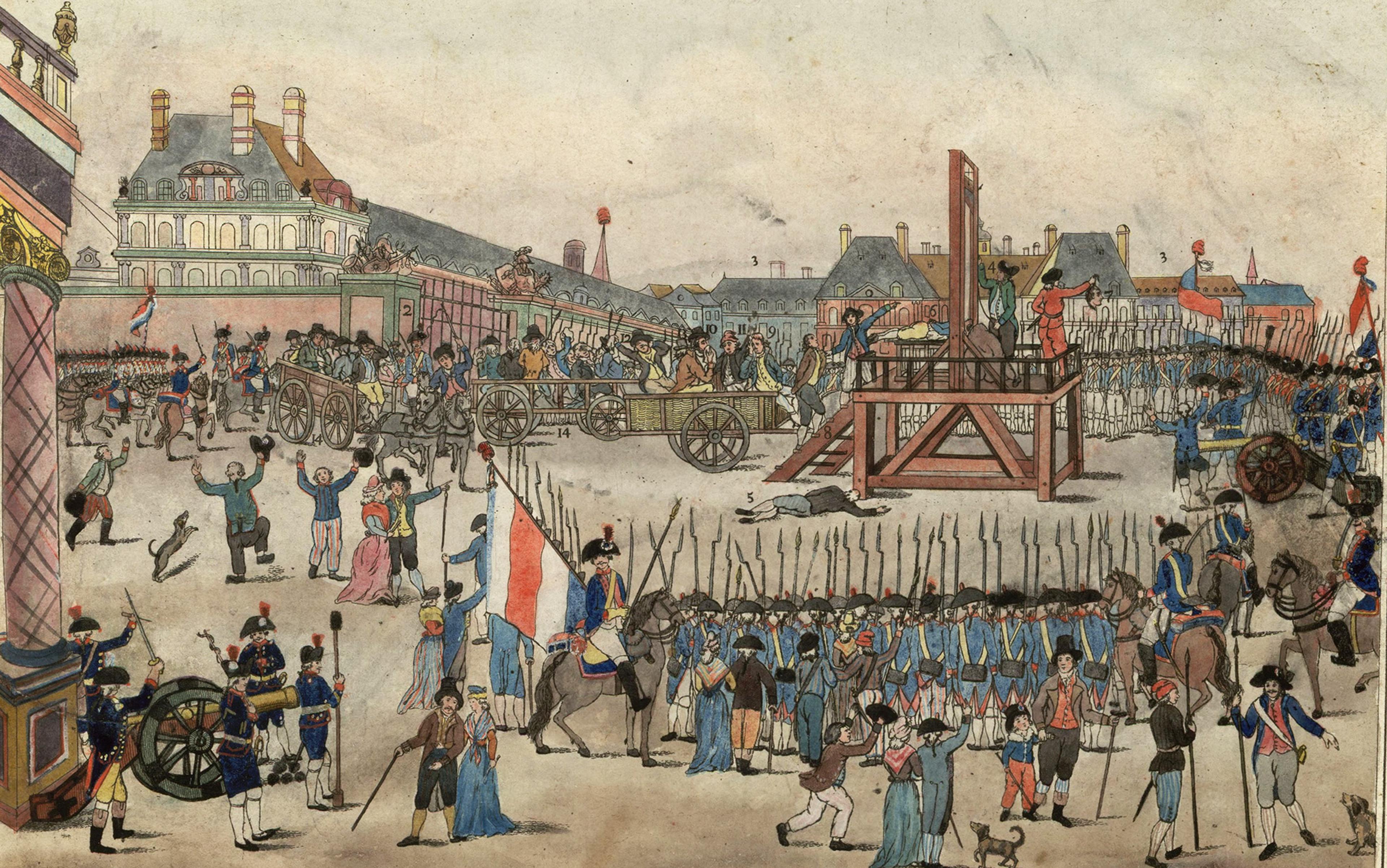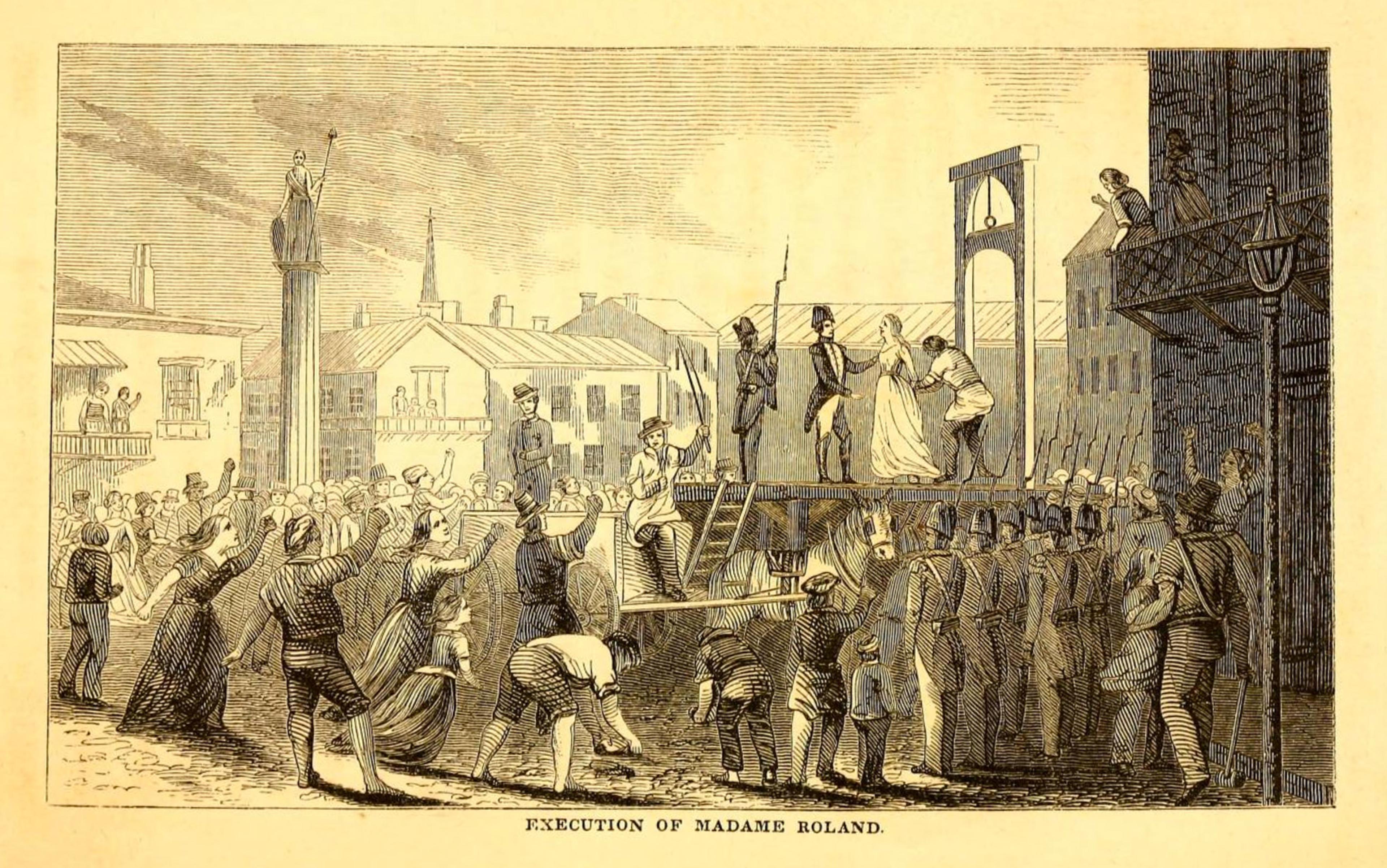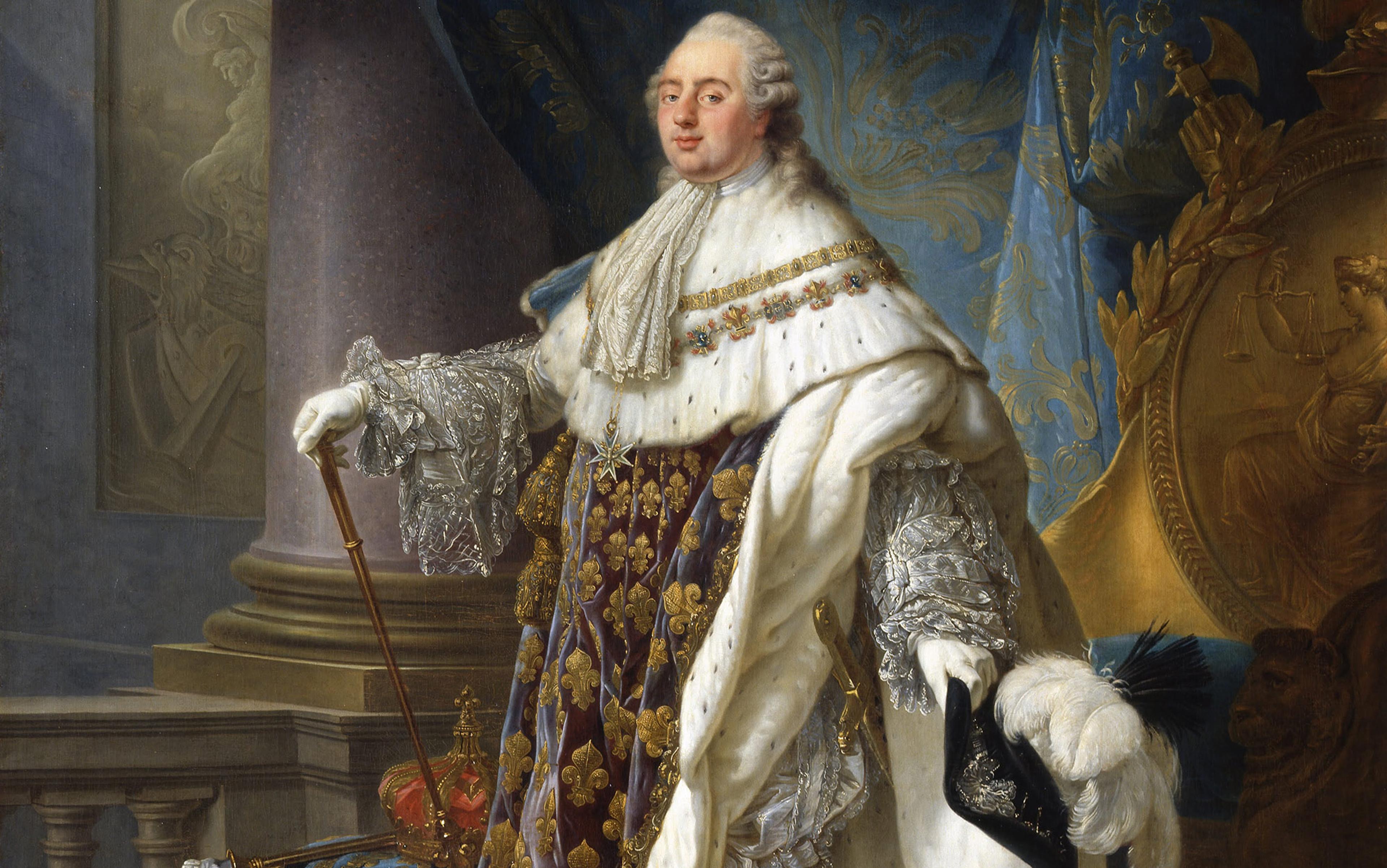Before dawn on 18 March 1871, the French National Army sent troops to the working-class neighbourhood of Montmartre in Paris, charged with retrieving the cannons left at the end of the country’s recent war with Prussia. Perched high on the buttes of Montmartre, the artillery was ‘turned toward the centre of the city, toward the city of luxury and palaces, of monarchical plots, of infamous speculators, and of cowardly governments,’ as described by the renowned novelist, journalist and socialist feminist André Léo (the male pseudonym of Léodile Champseix).
The soldiers had arrived before the horses were dispatched to move the cannons, and so the men waited. As the sun rose, women left their homes to buy bread and milk for their families. Stunned to encounter these Parisian brothers, fathers, husbands and sons preparing to stealthily remove the weapons, Montmartre’s women stepped between the cannons and the troops. The soldiers fraternised, raised their rifle butts into the air, and turned on their leaders. By the end of the day, two generals lay dead. As the legendary Communard Louise Michel later proclaimed: ‘the revolution was made.’
The French military withdrew from the city and placed it under siege. In the wake of these stunning events, Parisians formed the Paris Commune. The name of both the insurgency that ruled Paris for 72 days, and the revolutionary civil war in which it was forged, the Paris Commune stands as an iconic insurrectionary moment. For the past 152 years, it has loomed large, representing egalitarian potentials for the Left and terrifying power inversions for the Right.

Members of the Paris Commune pose beside the toppled statue of Napoléon I in the Place Vendôme, photographed by Bruno Braquehais
Parisians took action within their city walls. They formed a government fully subject to recall, while citizens simultaneously developed other centres of power: organisations and new institutions rooted in prior movements, ideological developments, and a palpable revolutionary tradition. The Paris Commune emerged as a radical experiment in direct democracy. Working-class women and men formed political clubs, seizing space in churches across the capital in a clear act of anti-clerical appropriation. They pressed the elected Commune government with demands and grievances. Other local and city-wide associations developed around women’s labour, education, and artists and the arts. The Commune opened elite institutions – the royal palace, the National Library, the Louvre – to the public for the first time. Its government outlawed bakers’ night work, ended the exploitative measures of the national pawnshop, and financially supported the feminist Union des femmes in its efforts to reorganise and revalue women’s work. The city held free public concerts and festivals, as a celebratory current of optimism shot through its neighbourhoods. It was a moment of extraordinary potential, and working-class, socialist, feminist, and anarchist Parisians seized it, toppling political, economic and sociocultural structures. And they did it under siege by the French army, waging a defensive civil war.
How did this happen? How did a brief and unplanned insurgency allow multiple nodes of power, widespread participation and an upending of hierarchies, without a clear leader and while under a military blockade? What enabled the sudden emergence of not only a revolutionary force, but also multiple highly organised, self-mobilising, autonomous political groups that reoriented the most powerful city in Europe into an egalitarian, radical, pro-worker metropolis?
The Paris Commune exploded onto the world stage. At the intersection of political developments, resistance movements, emerging liberatory ideologies and community-based organisations, the Commune resulted from the political will of a wide range of actors to embrace the revolutionary opportunity, and put hopes and ideas into action. They drew not only on their prior liberatory plans and resistant experiences, but also on Paris’s revolutionary legacy – a potent set of available memories embraced by socialists and feminists of many stripes. This combination of history, ideology, opportunity, lived experience and hope facilitated a radically democratic urban experiment. Without this extraordinary confluence of factors, pressed into the crucible of the revolutionary moment, there would be no Commune as we know it.
These emergent Communards began creating the world they wanted
In the wake of the 18 March events, Adolphe Thiers, the head of France’s reactionary republican government, pulled the army out of Paris. Facing a city-wide uprising by long-feared socialists and a radicalised working class, Thiers recognised the need to crush the uprising at any cost. The world would be watching this emerging contest between the forces of order and forces intent on destroying established hierarchies. He laid siege to the city.

Ruins of the Hôtel de Ville, 1871
Within the municipal walls, the Central Committee of the Parisian National Guard, thrust unexpectedly into control, recognised the enormous challenge they would face in fighting the French army with their poorly supplied and minimally trained guardsmen. Tasked with both governing and defence, they called elections to ‘legitimate’ their authority, a move contested as ‘unrevolutionary’ by the more radical Commune members. Following the election of the Commune Council, the new governing body, the Central Committee of the Parisian National Guard stepped down – but they remained constituted as a self-appointed informal oversight committee to assure the defence of both the revolution and workers’ interests. That made two centres of power.
An optimistic current of possibility shot through the city. Thousands of Parisians stepped up to participate in defence and governing. Across the city’s working-class districts, women and men established vigilance committees and joined (or re-joined) the National Guard to help defend the revolution. They formed political clubs, expressing their concerns and demands, and associations to reform or revolutionise education, women’s labour, the arts. Uncertain of what lay ahead, these emergent Communards began creating the world they wanted. The popular clubs and associations enacted direct democracy: a third power centre.
The intensity of the revolutionary moment produced a context that allowed concurrent nodes of power, but their emergence can be attributed to the effective laboratory of radicalism and democracy constituted in the immediate pre-Commune years. Political activism, labour organising and intellectual projects germinated and grew during the repressive Second Empire, from 1851 to 1870. Socialists and feminists organised resistance, in some cases from prison, and often from exile. These cooperative groups built the templates from which the Commune’s centres of organisation would be formed.
The International Workingmen’s Association (which did include some women) arose as a dominant force in Parisian socialism and labour activism, and subsequently in the Commune. Organised by British and French socialists in 1864 to unify multiple socialist movements, followers of the deeply misogynist ‘father of anarchism’ Pierre-Joseph Proudhon initially dominated the Parisian branch. But his influence waned by the decade’s end. Supporters of the revolutionary socialist Louis Auguste Blanqui, along with moderate feminist socialist men and women – including future Communards Eugène Varlin, Benoît Malon, Nathalie Lemel and the aforementioned André Léo – rose to the fore. While the organisation was capacious, ideological and political contentions – particularly around gender, labour and tactics – persisted within the International before, during and after the Commune.
Prior to the insurgency, French feminists addressed a range of equity issues but, because of their extreme marginalisation under the Napoleonic Code of law, women focused especially on political and legal equality. The Code denied women full citizenship, deprived married women of corporeal autonomy (a husband had unlimited rights of sexual access to his wife’s body), and disallowed their juridical rights (along with ‘minors … criminals, and the mentally debilitated’). During the Commune, most feminists abandoned these rights-based goals. They saw the insurgency as the end of old repressive institutions and the beginning of a new order. The revolution provided the opportunity for working-class, socialist, and anarchist feminists to dig beneath and beyond the level of political exclusion to address quotidian and structural inequities of not only gender but also class, and to do so from a variety of perspectives using differing approaches. As a result, multiple feminist socialisms emerged within and carried on after the revolution. Communard women, with the support of some Communard men, transgressed gendered barriers to labour, politics, religion, education and the battlefield. They reshaped these multiple and intersecting gendered spaces.
Wide boulevards lined with elegant apartment buildings meant displacement of working-class populations
In the final years of the Second Empire, Louis-Napoléon had sought to regain waning support by loosening restrictions on speech, association and the press. Parisians responded by holding public meetings across the city; these meetings became another vital revolutionary training ground. Drawing a broad range of participants – workers, thinkers, activists – the meetings became fora for articulating grievances and voicing economic, social and political desires. Expressions of anticlericalism abounded, as when an anonymous participant condemned priests for ‘abusing the confidence the confession gives them to seduce workers’ daughters’. Meeting topics included ‘Marriage and Divorce’, ‘Liberty: The Condition of Socialism’ and ‘Women’s Work’. Initiated by socialist and feminist leaders, the events offered the podium to all interested parties. As Léo explained: ‘working women with fingers bruised from toiling all day, listen and learn … [and] also want to speak.’ With attendance numbering in the tens of thousands at multiple Parisian sites, the 1868-69 public meetings radicalised and served as a tutorial in insurgency for working-class future Communards.
The city itself provided revolutionary preparation both psychically and physically. Long resented by the provinces and feared by the national leadership – for its history of political radicalism, its wealth, and its power – the French government had denied Paris self-rule since 1795. The desire for municipal autonomy, interlaced with the pervasive revolutionary tradition, infused the capital’s political movements.
Geographically, Louis-Napoléon had drastically redesigned the city for interlaced aesthetic and political reasons. Levelling tight, dark medieval-era neighbourhoods and replacing them with wide, sweeping boulevards lined with elegant apartment buildings meant displacement of working-class populations. Perennially concerned with social unrest, the government also intended the broad avenues of the city centre to facilitate rapid troop movement across urban spaces and to impede the construction of barricades. Working-class Parisians, driven to the undeveloped edges of the city, created radicalised communities like Montmartre, which birthed the uprising. They identified strongly with their specific neighbourhoods as well as with the larger city. This localised allegiance undergirded community-based political and defence efforts during the Commune.
The year before the Commune, in July 1870, Louis-Napoléon had begun a war with Prussia, a calamitous endeavour that resulted in his battlefield surrender two months later. The Empire fell, and the Republic was declared. The new Government of National Defence, however, feared the city’s working class more than they feared Prussia. They surrendered in January 1871.
France’s newly elected, monarchist-led National Assembly, which replaced the Government of National Defence, introduced a series of repressive economic and political measures aimed at the working class and intended to ‘restore order’. Decreeing the immediate payment of all back rents (suspended during the siege), the end of a moratorium on sales by the national pawnshop (in which desperate Parisians had deposited vital household items and work tools), and the shuttering of most socialist publications (which had proliferated), the government then relocated from Paris to Versailles, the historical seat of the monarchy. Together, these acted as tinder to smouldering working-class anger and frustration.
Immediately after the seizure of the cannons on 18 March, Thiers pulled the French national army out of the city. Parisians suddenly held the capital, and people rejoiced in the streets. Seizing the revolutionary opportunity, they spent the next two months enacting the ideas and programmes they had envisioned in the antecedent years. Communard women and men worked to reconceptualise political, economic and social life. Bourgeois socialists and feminists, and working-class participants in political clubs, neighbourhood arrondissement associations and vigilance committees held a wide range of ideologies, goals and strategies. Paris became a massive canvas filled with revolutionary lines and colours, some beautifully blending, some contrasting, and some sharply clashing, muting or erasing each other.

A crowd gathered at the Place Vendôme during the Commune, May 1871
During the Commune, political factions undertook some significant actions that undercut the liberatory visions of opposing political groups. When the new Commune government – dominated by anti-authoritarian, moderate socialists – held elections intended to garner legitimacy and legality, the Blanquists opposed the move as anti-revolutionary. As the Communard Louise Michel lamented, Thiers and his army ‘benefitted from the time that Paris lost around the voting urns.’ The Blanquists, who subsequently held a majority on the elected Commune Council, ultimately created an authoritarian extrajudicial body, the Committee of Public Safety, in response to the increasingly dire military situation. Modelled after the eponymous body created by the Jacobins in 1793, the moderate socialists vociferously opposed the Committee of Public Safety as antidemocratic and counter to fundamental Commune principles. Outside of the governmental hierarchies, working-class political clubs (some male-only, some female-only, some mixed) claimed their status as inheritors of the French revolutionary tradition and enacted popular sovereignty, promoting cooperation, association and militant anticlericalism. They pushed the Commune Council toward greater radicalism. Expressing frustration with the inaction of this Council, a speaker in a women’s political club contended: ‘It is time for woman to replace man in directing public affairs.’
The Commune’s suddenness and absence of clear leadership allowed an openness
Political factions undertook conflicting actions regarding women’s rights and freedoms. In the Commune Council elections, women were excluded from participation, continuing their historical disenfranchisement. As the Commune evolved, however, most feminists focused their efforts on goals more tangible than the vote, and looked beyond the revolution’s formal governing structure. The Commune’s Commission of Labour and Exchange, led by the feminist, moderate socialist Léo Frankel, agreed to financially support the feminist Union des femmes in its city-wide efforts to reorganise women’s labour into producer-owned cooperatives. They backed measures to advance women’s economic and social independence. In contrast, the Committee of Public Safety, on its first day of existence, banned women from the battlefield, indicative of the antifeminism of many of the majority Blanquists. Women nonetheless persisted to participate militarily and were welcomed by rank-and-file National Guardsmen. Asserting women’s place on the battlefield, André Léo wrote: ‘Women are no less courageous than men.’
The Commune’s suddenness and absence of clear leadership allowed an openness that enabled a broad range of actors and ideologies to share, and jostle for, power. The revolution fluoresced because politically, economically and/or socially oppressed and marginalised people had organised and theorised for decades. They did so from different positions and perspectives, advocating a range of tactics and seeking varied goals. When the revolutionary door opened, they stepped in. Proudhonists, Blanquists, Internationalists, feminist socialists, labour unionists and ‘everyday’ working-class Parisian women and men found space in the insurgent arena to enact their visions of equity and justice. No hard line existed between the governing and the governed. The Commune operated with what the political theorist Massimiliano Tomba terms a ‘dynamic between powers that reciprocally limit each other’. Such reciprocal limitation not only allowed decentralised power, but also enabled antidemocratic efforts to curb such capaciousness and steps toward equity.
Sixty-four days after the Commune’s inception, the French army breached the walls of Paris and streamed into the capital. By week’s end, 15,000 to 20,000 Parisians lay dead as fires burned across the city. Over the ensuing century and a half, debates have raged around the causes of the Commune’s demise, and over the question of the Commune’s ‘success’. Inarguably, the Commune triumphed as an ideal for the Left, creating a set of radical possibilities. It endures not only as a historical event, but also as a sketch open to multiple interpretations. Its historical content provides a map suggesting various routes to egalitarianism, while ‘the idea of the Commune’ presents an open vessel, sufficiently ample to hold differing and shifting equitable ideals.
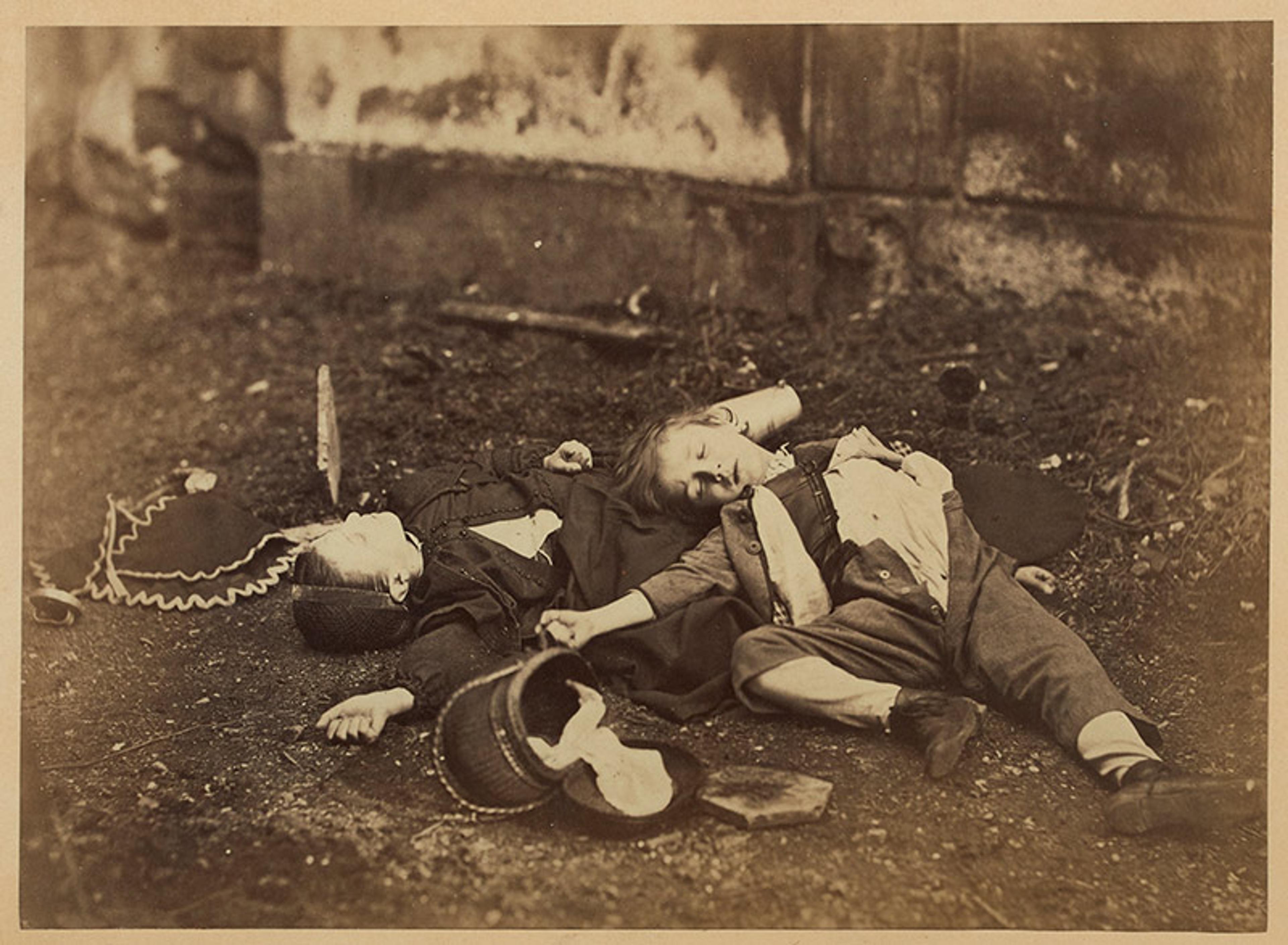
A staged photo of a dead woman and child in the Paris Commune, 1871
Yet, activists and scholars have long competed to define and own the Commune’s legacy. Retelling the revolution involved politicised interpretation and scholarly critique, and often a combination of the two. During the 20th century, the French communist and socialist parties vied for the mantle of the Commune’s true descendant, often shaping the revolutionary history to their needs. More recently, French (and some American) scholars and activists have misread the insurgency as part of a liberal, republican tradition. This misinterpretation and deradicalisation is best exemplified in the 2013 (failed) efforts to have Louise Michel placed in France’s Panthéon, a memorialisation intended for those who extraordinarily sustained the Republic – which, as a revolutionary anarchist, she did not. Pantheonisation would have been anathema to Michel.
From both the Left and the Right, innumerable publications have retold and analysed the Commune, its actors, and its aftermath. Whether demonising or glorifying it, or falling somewhere in the wide interstices, nearly every work published on the Commune prior to recent years shares a fundamental common misapprehension: they ignore or profoundly marginalise women’s participation and the gendered nature of the revolution.
Some women, like some men, likely lit some fires. But Communard women did not burn Paris
The women who did appear in the first dozen decades of scholarship were the pétroleuses, the working-class Communards accused of burning Paris during Bloody Week. Most scholars, at minimum, uncritically mentioned these alleged incendiaries. Ignited then stoked by Versailles, its sympathisers and its journalistic supporters, the pétroleuse accusations exploded because of the uncertainty over who set the conflagrations engulfing the city. Working-class women made obvious targets. Participants in the upending of class and religious hierarchies as Communards, they simultaneously undermined the gender order in their political, economic and martial engagements. Anti-Communards expressed palpable fear and hatred of these revolutionary women. Having destabilised these dominant forms of control, could not political arson be a next, desperate step?
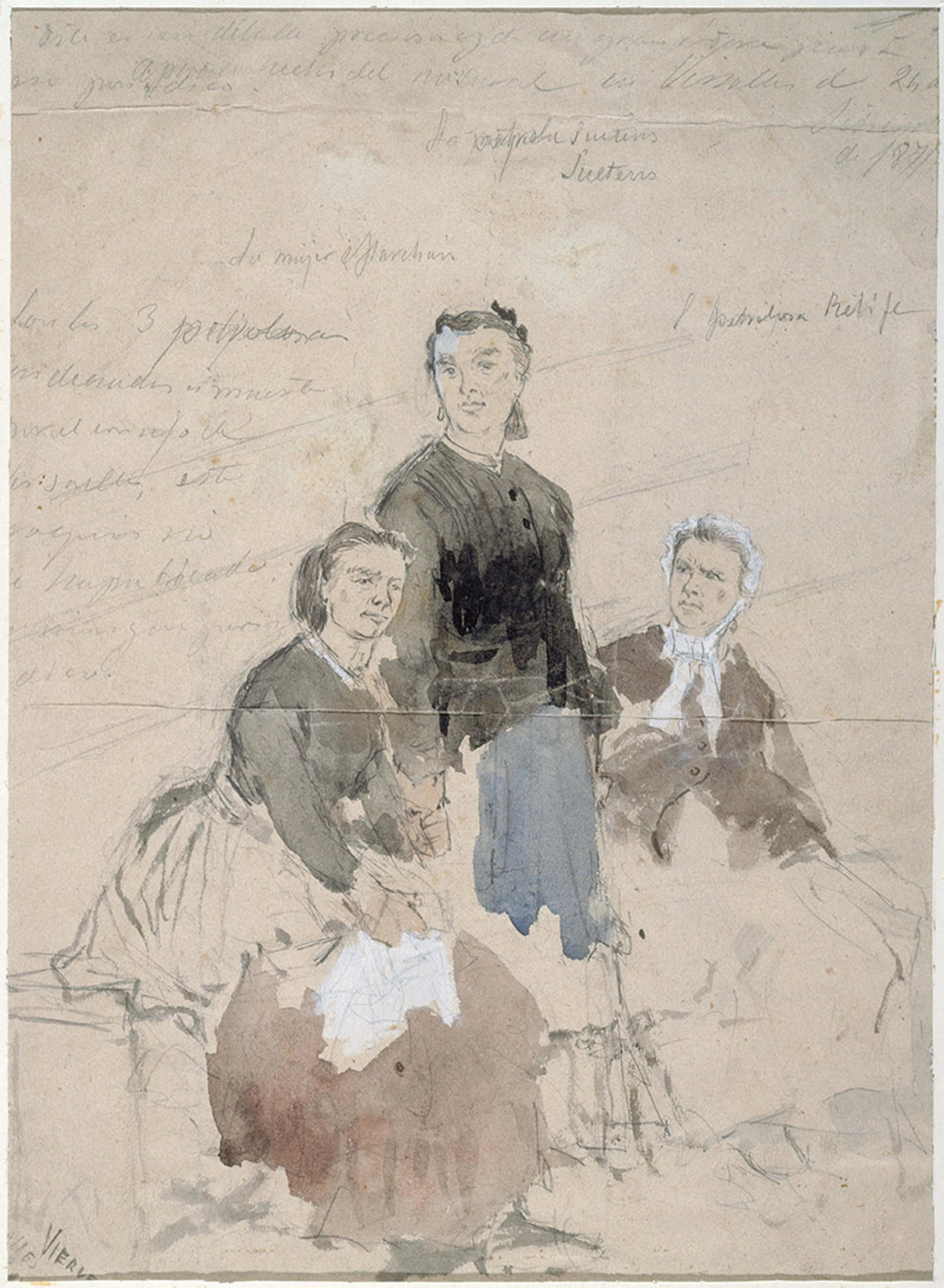
Three women popularly rumoured to be pétroleuses and accused of much of the burning down of Paris by the Commune
Paris burned because of Versailles bombardment, and because, once the end appeared inevitable, Communards torched major institutional buildings, including the Tuileries Palace, the Prefecture of Police, and the Ministry of Finance. Male and female Communards fought side by side on the streets of Paris and behind barricades during Bloody Week. While the pétroleuse myth materialised from gendered and class-based conservative fears, and led to the execution of innocent women and girls, some women, like some men, likely lit some fires. But Communard women did not burn Paris. Until recent decades, however, scholars did not question the myth. Without an understanding of the era’s dominant gender order, and its intersections with class and religion, the depth of working-class Communard women’s transgressions remained opaque – as did its link with the pétroleuse invention.
In addition to the mythical pétroleuses, Louise Michel also briefly appeared in multiple works on the revolution. Generally portrayed as a heroic anomaly, Michel stood as the lone woman within the fully masculine revolutionary world shaped by scholars of the Commune. They ignored the presence and significance of women in the primary sources, as well as, from the 1960s onward, the slowly emerging scholarship that re-examined the Commune as a gendered event composed of both women and men. The exclusion of women and blindness to gender results in a distorted and partial vision of the event, its causes, and its aftermaths.
Women created the largest and most effective organisation during the Commune (the Union des femmes); the Commune’s official governing body made a gendered decision to perpetuate the reactionary politics of maintaining the disenfranchisement of half of the population; women formed political clubs demanding specifically gendered changes in religion, education and familial authority; one of the Committee of Public Safety’s first actions was to ban women from the battlefield (in response to their appropriating space in the deeply masculinised arena). These are but a few examples of events and ideas central to the Commune that most scholars have either omitted or glossed over, events and ideas that reshape and clarify our understanding of the insurgency.
Conflict marked not only the Commune’s internal workings, but also its long wake. Although ruthlessly crushed, the uprising still generates heated disputes over its definition and claims to its heritage. Women and men seized the revolutionary moment following years of repression, political organising and ideological development, enacting radically democratic ideals by allowing multiple centres of power. Erasing the roles and significance of a substantial portion of its participants (women), and neglecting to recognise one of its fundamental forms of power relations (gender), has for too long stymied a clear comprehension of this extraordinary event and its legacy.

